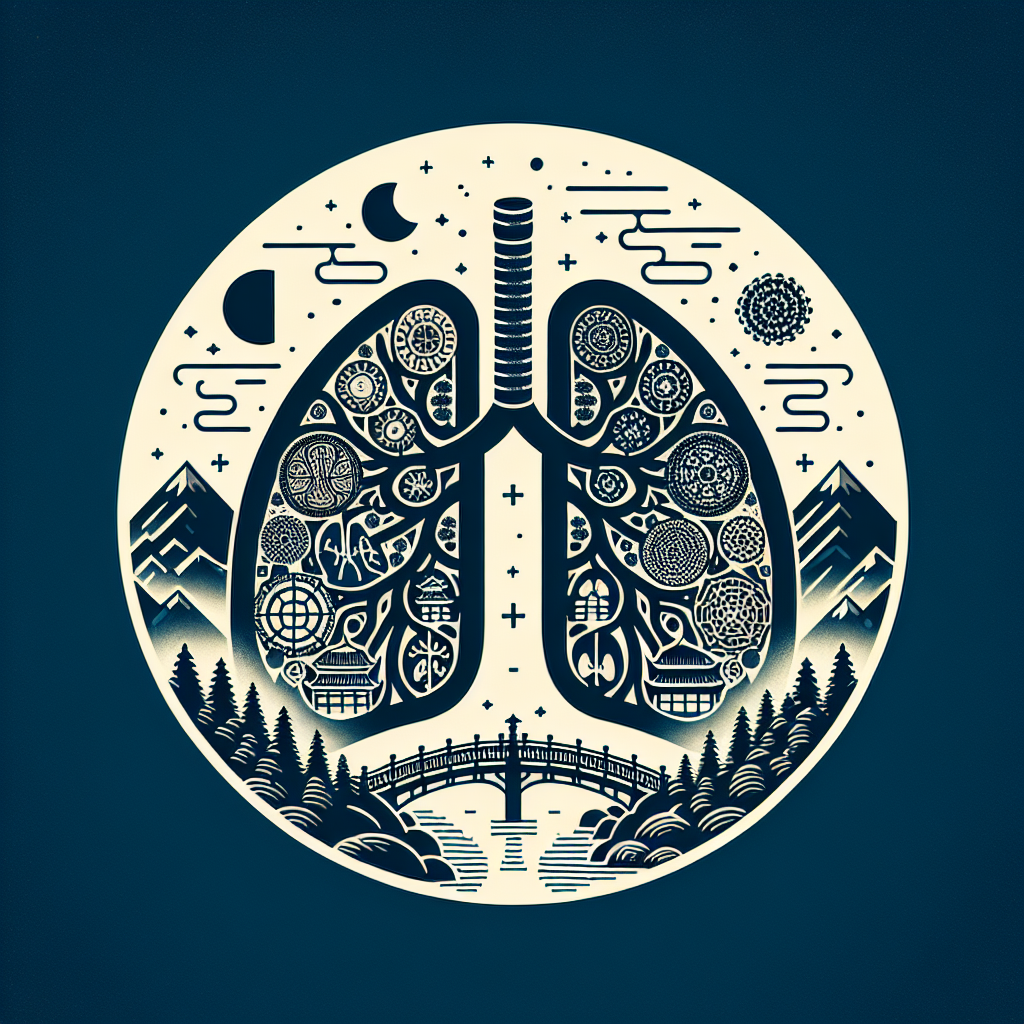Bridging East and West: Comprehensive Approaches to Managing Bronchitis
Bronchitis, a condition characterized by the inflammation of the bronchial tubes, affects millions of people worldwide. It manifests through symptoms such as persistent coughing, mucus production, wheezing, and chest discomfort. Approaches to managing bronchitis vary significantly across different cultures and medical practices. This article delves into the comprehensive approaches taken by both Western medical practitioners and Eastern/alternative practitioners to treat bronchitis, highlighting their differences, similarities, and potential for integrative treatment strategies.
Understanding Bronchitis
Bronchitis can be classified into two types: acute and chronic. Acute bronchitis is usually a short-term condition often caused by viral infections, while chronic bronchitis is a long-term condition often associated with smoking and other environmental factors, falling under the category of chronic obstructive pulmonary disease (COPD).
Symptoms of Bronchitis:
- Persistent cough
- Production of mucus (sputum)
- Fatigue
- Shortness of breath
- Slight fever and chills
- Chest discomfort
Western Medical Approaches
Western medicine typically follows a structured, evidence-based protocol for treating bronchitis. The primary goals are to alleviate symptoms, clear the infection, and prevent complications.
Pharmacological Treatments:
1. Antibiotics:
Antibiotics are prescribed for bacterial bronchitis but are ineffective against viral infections, which are the most common cause of acute bronchitis. Over-prescription of antibiotics is a significant concern due to the risk of antibiotic resistance.
2. Bronchodilators:
These medications help open the airways, making breathing easier. They are particularly useful for individuals with chronic bronchitis or those experiencing significant wheezing.
3. Cough Suppressants and Expectorants:
Cough suppressants can provide relief from persistent coughing, while expectorants help loosen and expel mucus from the respiratory tract.
4. Anti-inflammatory Medications:
Corticosteroids may be prescribed to reduce inflammation and help ease breathing difficulties, particularly in severe cases of chronic bronchitis.
Lifestyle and Supportive Care:
1. Smoking Cessation:
For chronic bronchitis, quitting smoking is imperative. Smoking not only exacerbates symptoms but also accelerates the progression of the disease.
2. Hydration:
Adequate fluid intake helps thin the mucus, making it easier to expel.
3. Humidifiers:
Using a humidifier can help keep the airways moist and reduce irritation.
4. Rest:
Ensuring plenty of rest allows the body to heal and recover more efficiently.
Advanced Treatments:
1. Pulmonary Rehabilitation:
This is a comprehensive program that includes exercise training, nutritional advice, and education to help individuals manage chronic bronchitis more effectively.
2. Oxygen Therapy:
For severe chronic bronchitis, supplemental oxygen may be necessary to maintain adequate oxygen levels in the blood.
Eastern/Alternative Approaches
Eastern and alternative medicine offer a holistic approach to treating bronchitis, focusing on balancing the body’s energy, boosting the immune system, and addressing the root causes of the condition.
Traditional Chinese Medicine (TCM):
Traditional Chinese Medicine views bronchitis as a disruption in the flow of Qi (vital energy) and an imbalance in the body’s Yin and Yang. Treatment aims to restore balance and enhance overall health.
1. Herbal Remedies:
TCM practitioners often prescribe herbal formulas tailored to the individual’s specific symptoms and constitution. Common herbs used include:
– Licorice Root (Glycyrrhiza glabra): Known for its anti-inflammatory and soothing properties.
– Ginger (Zingiber officinale): Helps reduce inflammation and improve circulation.
– Mullein (Verbascum thapsus): Used to soothe the respiratory tract and expel mucus.
2. Acupuncture:
By inserting fine needles into specific points on the body, acupuncture aims to restore the flow of Qi, reduce inflammation, and alleviate symptoms such as coughing and chest discomfort.
3. Qigong:
This practice combines physical movement, breathing exercises, and meditation to enhance the flow of Qi and strengthen the respiratory system.
Ayurveda:
Ayurveda, the traditional medicine system of India, approaches bronchitis by identifying and balancing the body’s doshas (Vata, Pitta, and Kapha).
1. Herbal Treatments:
Ayurvedic practitioners use herbs and spices like:
– Tulsi (Ocimum sanctum): Known as holy basil, it has anti-inflammatory and immune-boosting properties.
– Turmeric (Curcuma longa): A potent anti-inflammatory agent.
– Black Pepper (Piper nigrum): Enhances the bioavailability of other herbs and aids in respiratory function.
2. Dietary Modifications:
An emphasis is placed on a balanced diet that aligns with the individual’s dosha type. Warm, moist foods and anti-inflammatory ingredients are often recommended.
3. Pranayama:
These are breathing exercises that help clear the respiratory passages, improve lung function, and enhance overall wellbeing.
Homeopathy:
Homeopathy treats bronchitis by administering highly diluted substances that in larger amounts would cause symptoms similar to those being treated. Common remedies include:
– Bryonia: For dry coughs aggravated by movement.
– Phosphorus: For coughs with significant mucus production and chest pain.
– Antimonium tartaricum: For rattling coughs with difficulty expelling mucus.
Integrating Eastern and Western Approaches
Increasingly, there is recognition of the benefits of integrating both Western and Eastern approaches to provide comprehensive care for bronchitis patients.
Benefits of Integration:
1. Holistic Care:
Combining Western medicine’s targeted treatments with the holistic approaches of Eastern medicine can address both the symptoms and underlying causes of bronchitis.
2. Complementary Strengths:
Western medicine’s strength lies in its evidence-based, acute care capabilities, while Eastern medicine excels in chronic care and prevention. Integrating these can offer a more balanced approach.
3. Personalized Treatment:
Integrative care allows for highly personalized treatment plans that can be adjusted based on individual responses and preferences.
Practical Integration Strategies:
1. Collaborative Care:
Encourage collaboration between medical doctors and alternative practitioners to create a cohesive treatment plan.
2. Patient Education:
Educate patients about the benefits and limitations of both approaches to empower them to make informed decisions.
3. Research and Evidence:
Promote and support research into the efficacy and safety of integrative treatments for bronchitis to build a robust evidence base.
Conclusion
Managing bronchitis requires a nuanced approach that considers the individual’s unique health needs and preferences. By bridging Eastern and Western medical practices, we can harness the strengths of both traditions to provide comprehensive, effective, and personalized care for bronchitis patients. Integrating these diverse approaches holds the promise of not only alleviating symptoms but also improving overall health and preventing future respiratory issues.

